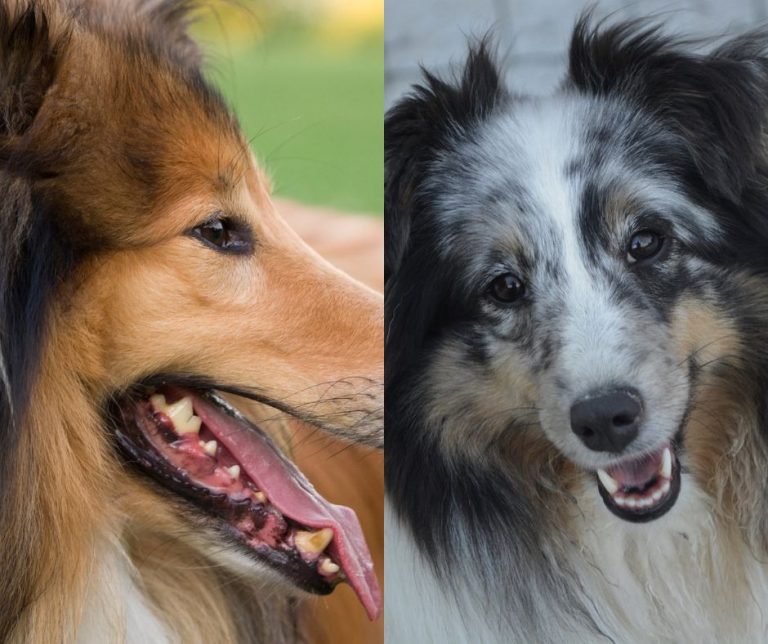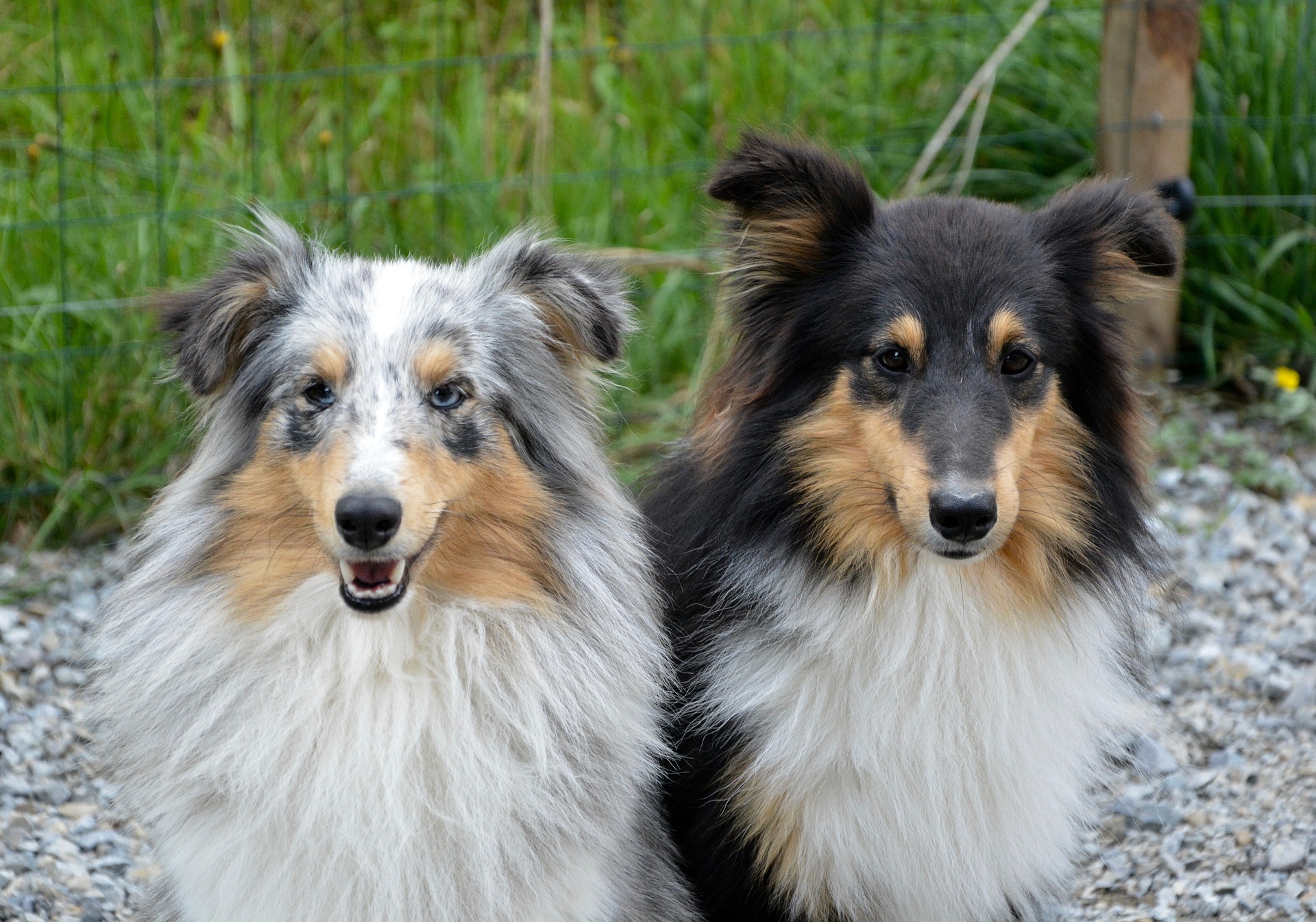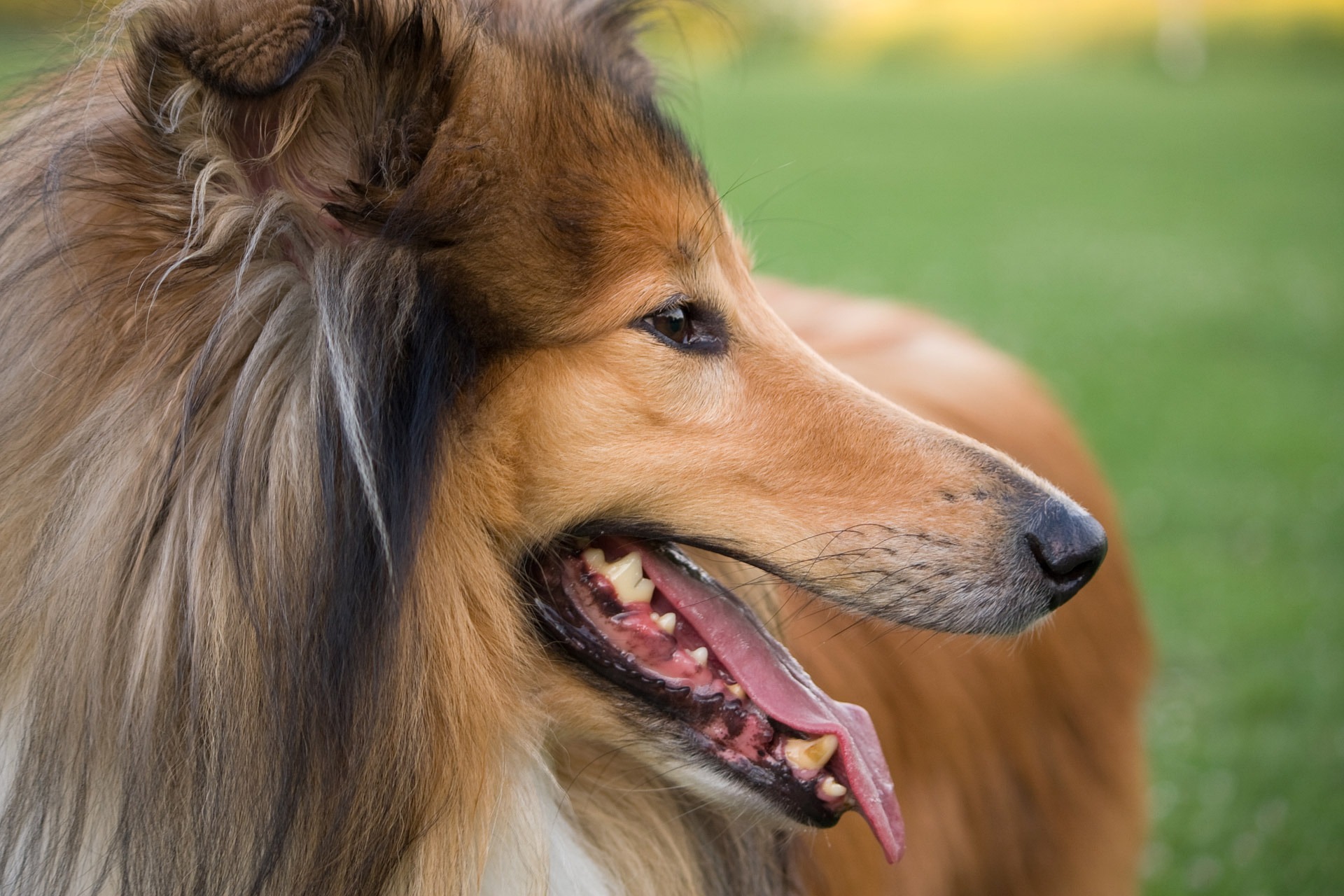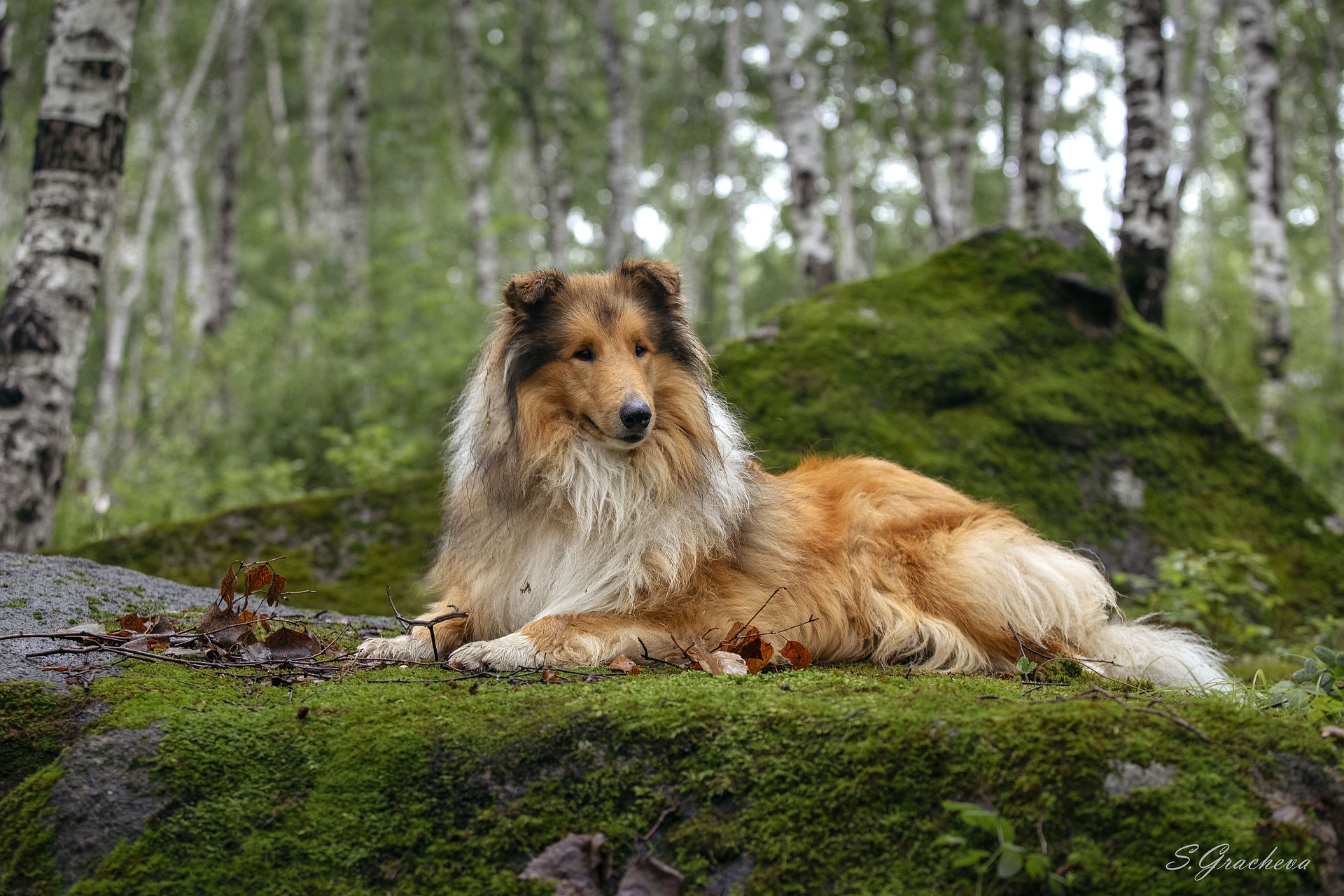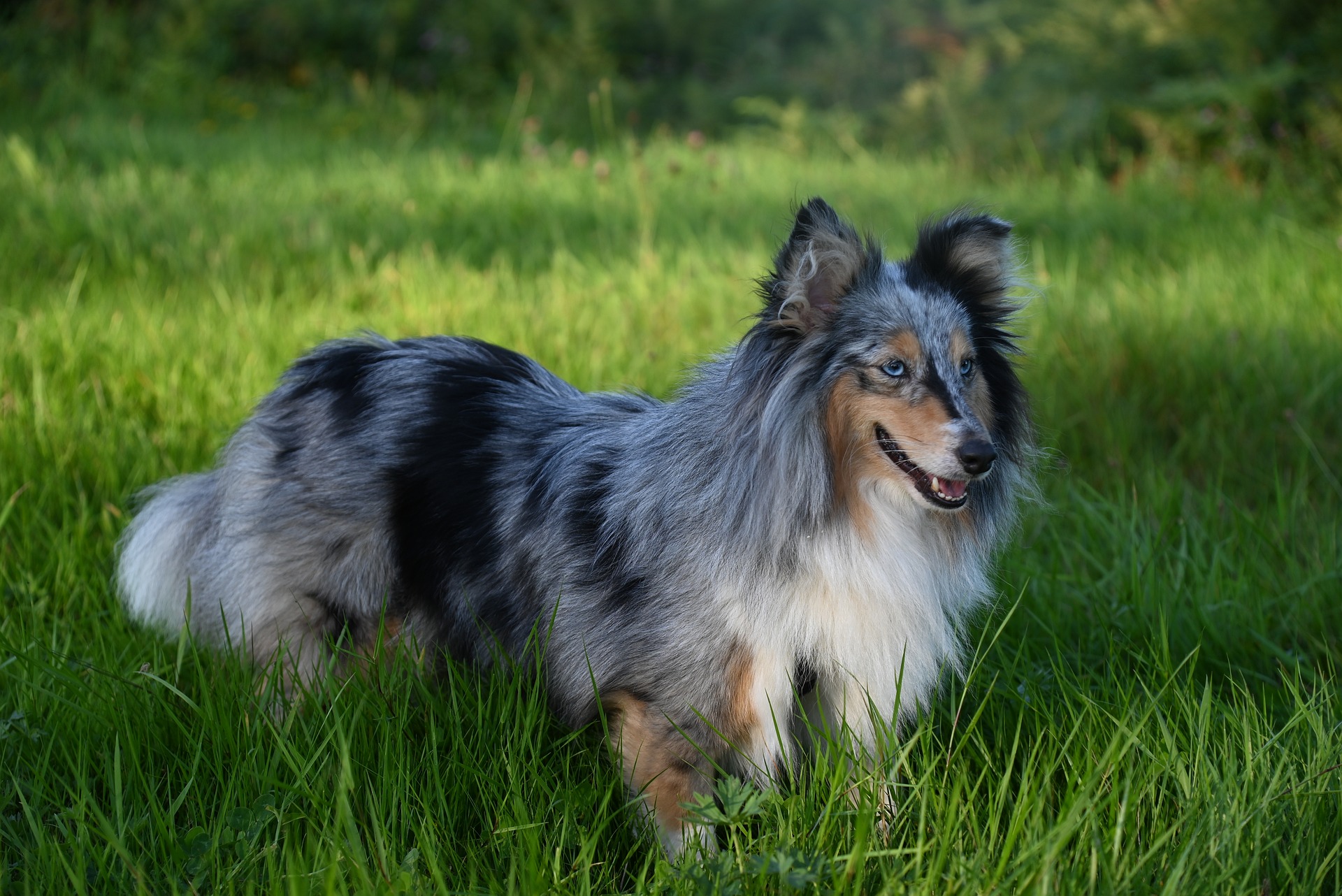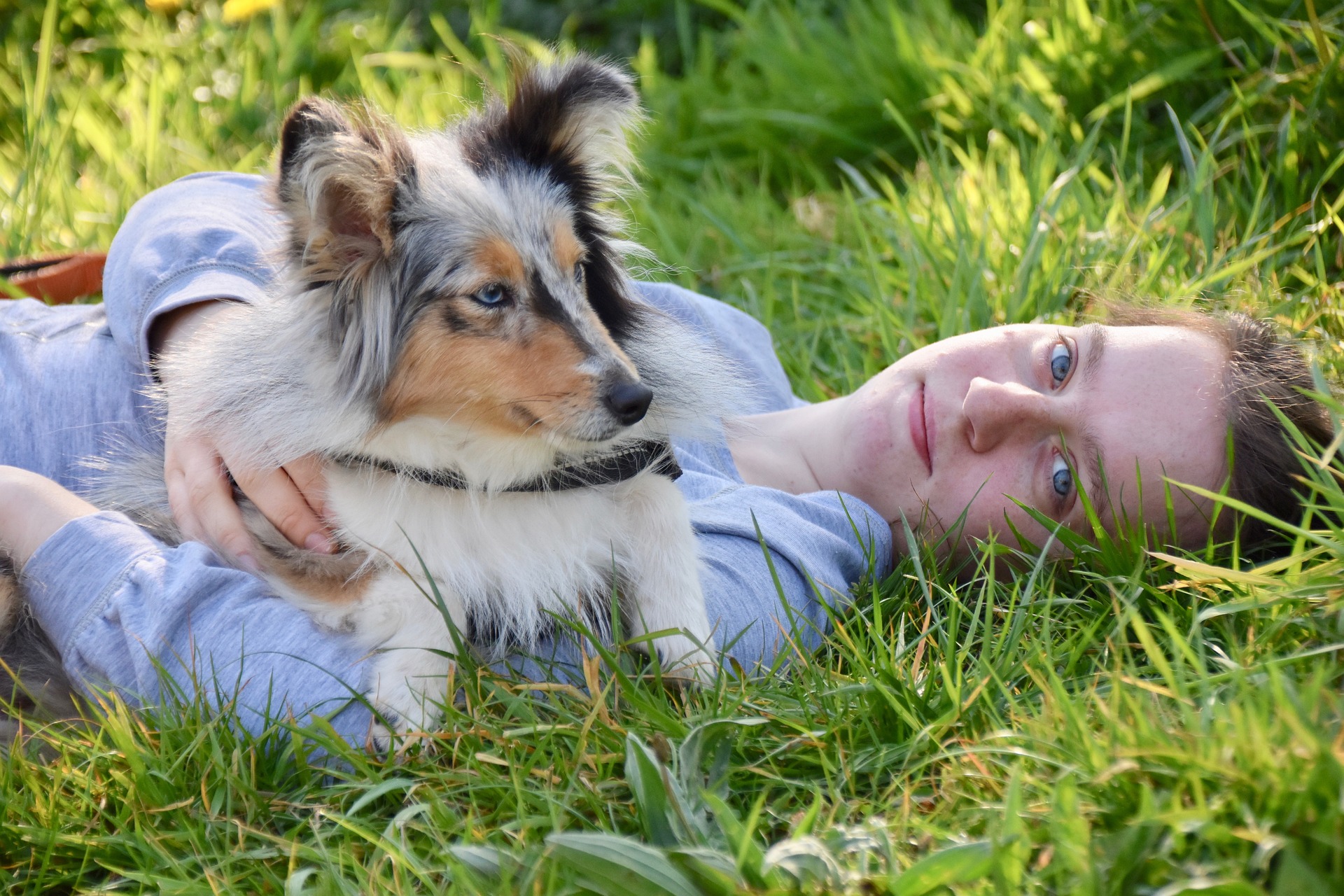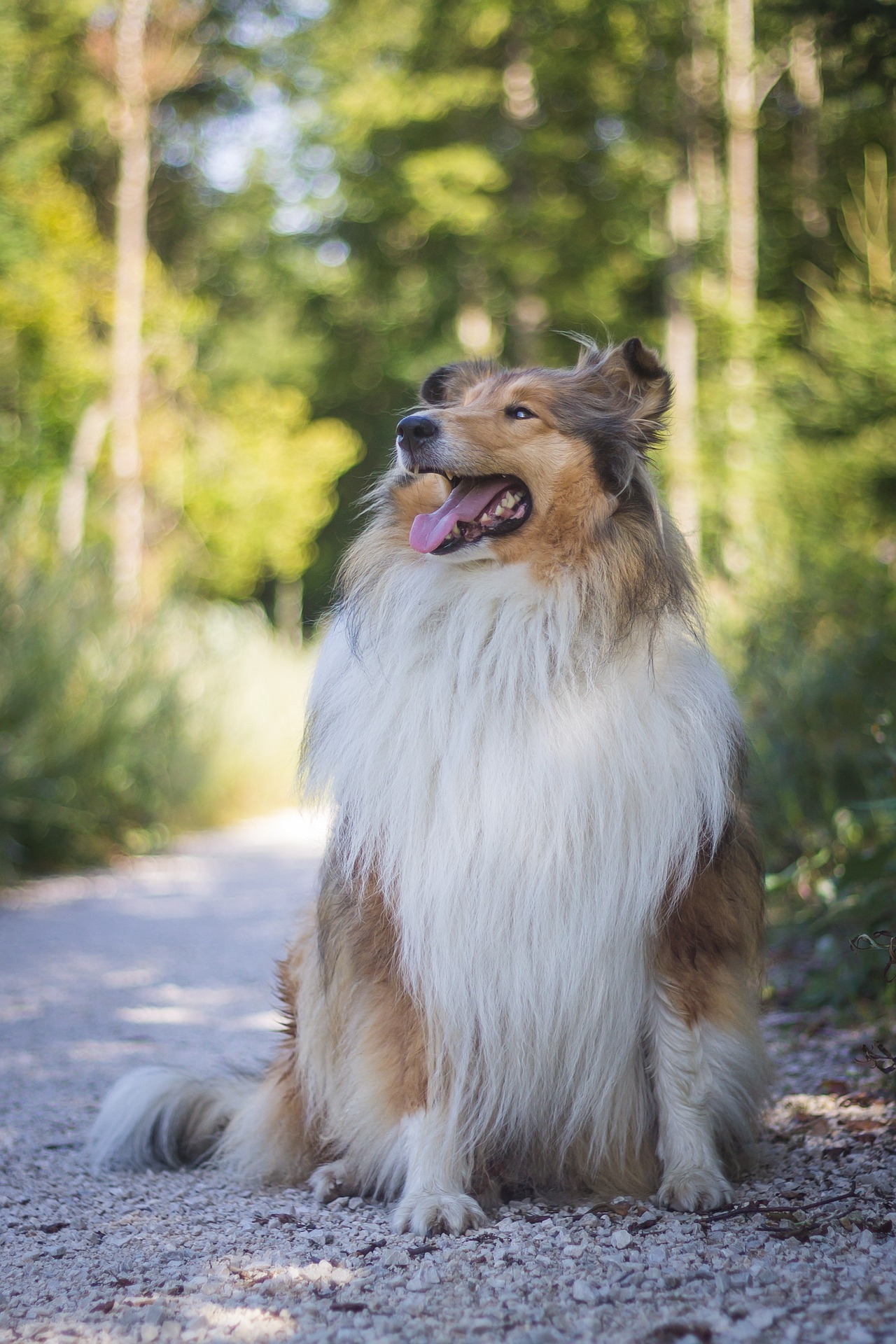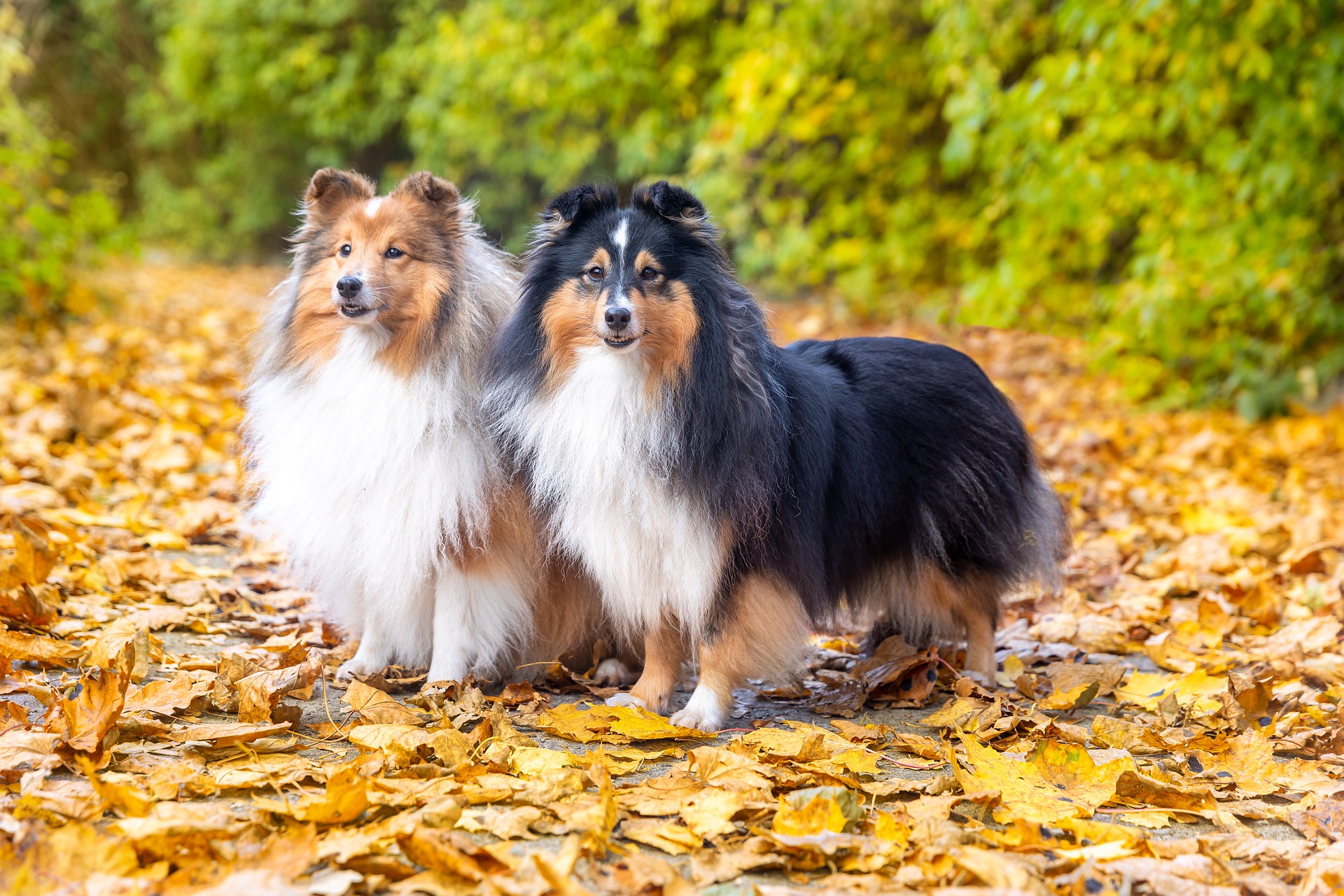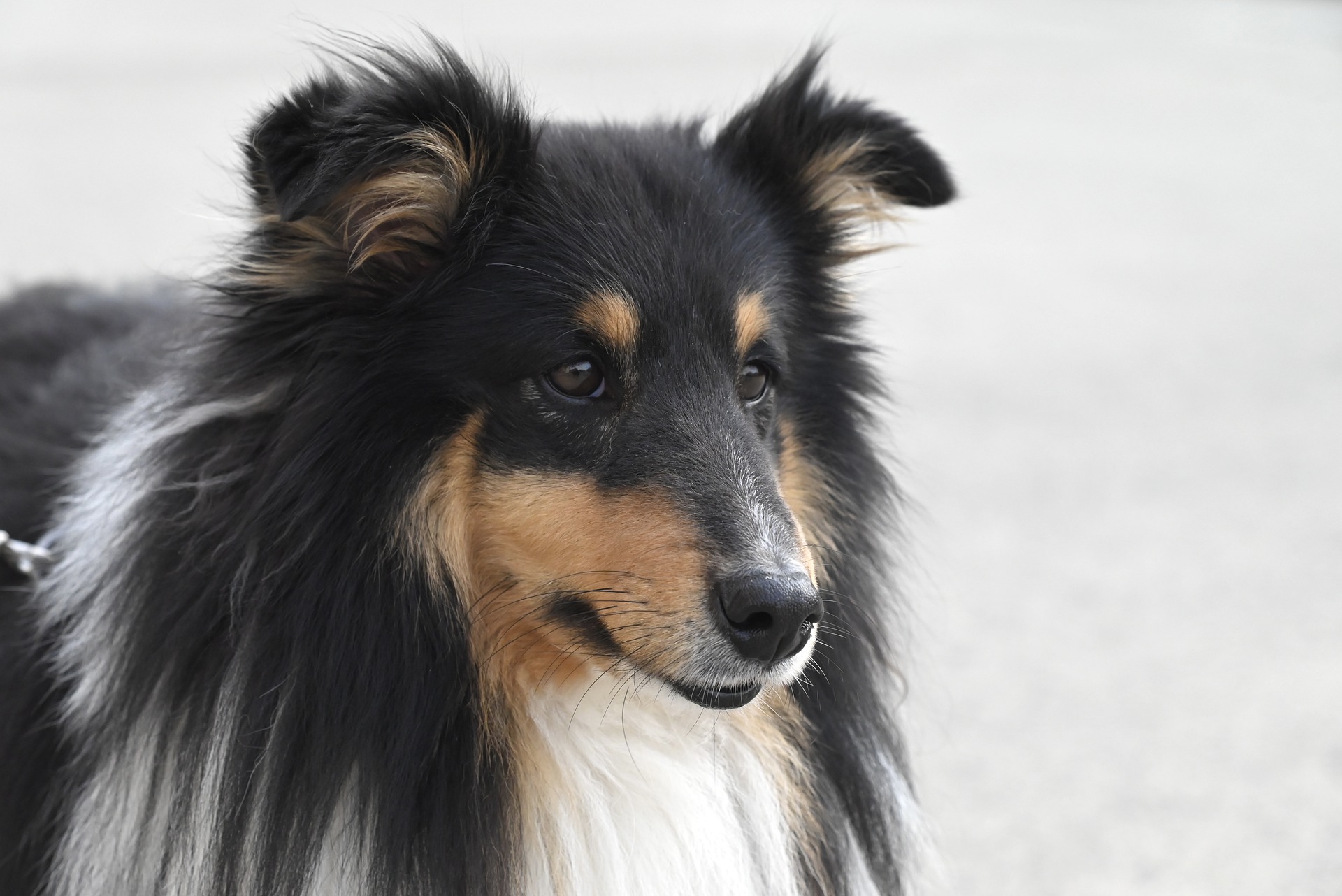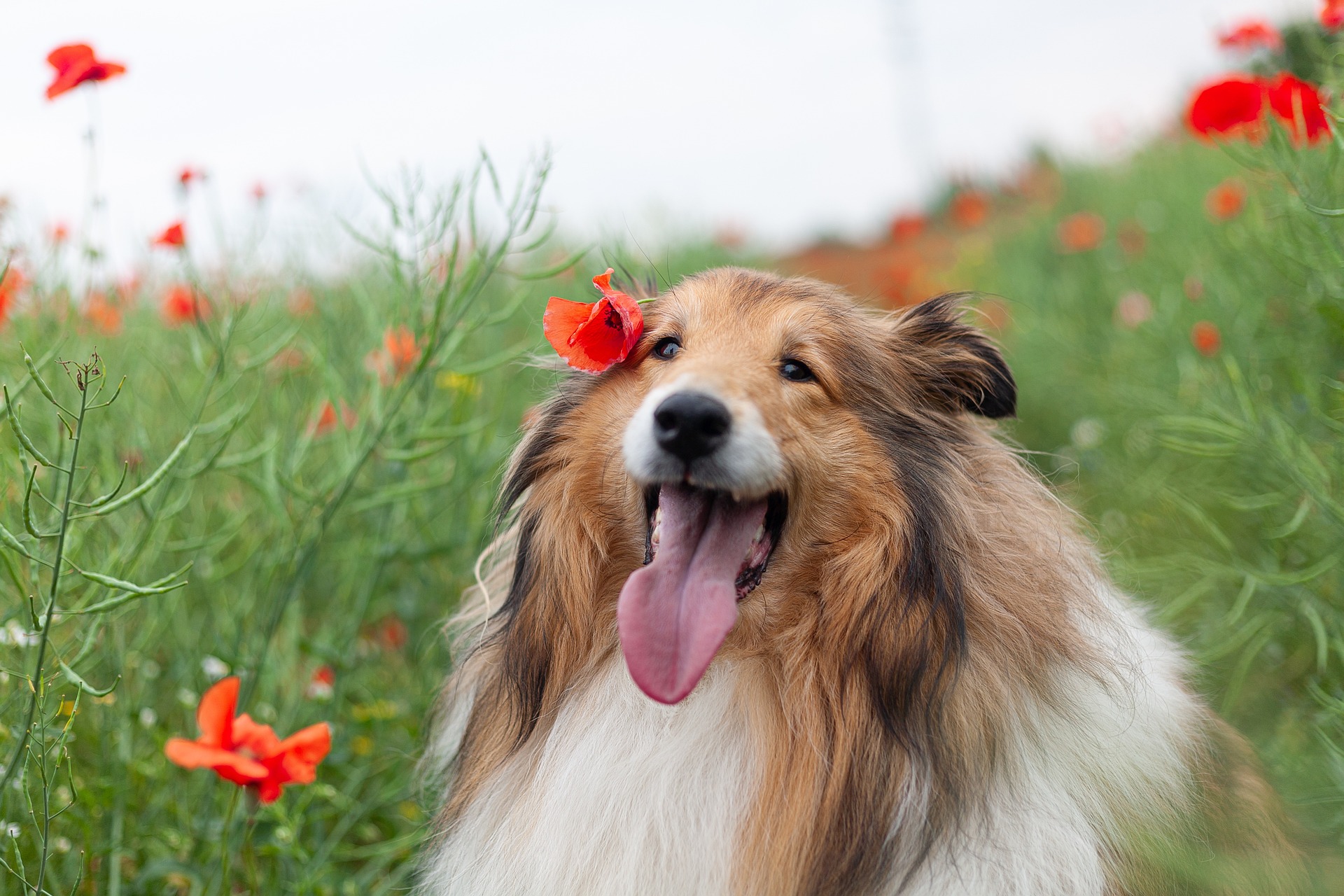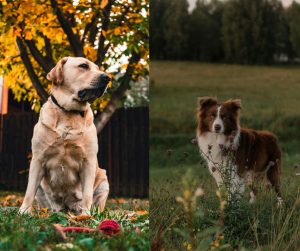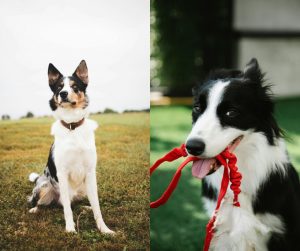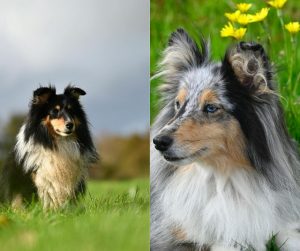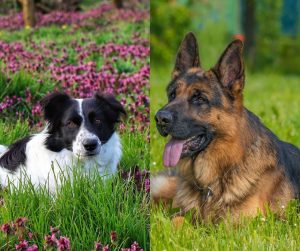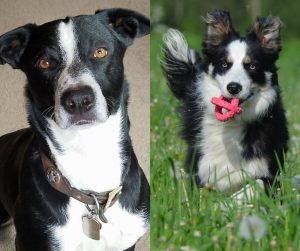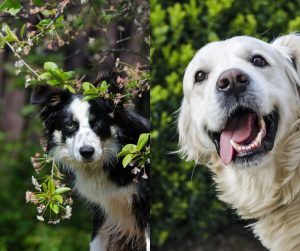When considering a furry addition to the family, understanding the differences between similar dog breeds can be crucial to making the right choice.
Shetland Sheepdogs and Rough Collies are two breeds that are often confused due to their strikingly similar appearance and shared heritage. They both hail from the herding group, known for their intelligent and loyal nature, and have historically worked alongside humans, managing livestock.
Despite their shared lineage, there are notable differences between the two breeds.
Shetland Sheepdogs, also affectionately known as Shelties, are smaller in stature, making them well-suited for life in both rural and suburban settings.
On the other side, the Rough Collie, which gained fame with the general public as the breed of the iconic television star Lassie, is larger and has a presence that commands more space.
While Shelties and Collies may both exhibit a protective and smart disposition, these traits manifest in their own unique ways due to their diverse backgrounds and physical attributes. Each breed has specific exercise, training, and space needs.
Today, we will look at the Shetland Sheepdog vs Rough Collie dog breed comparison.
Key Takeaways
- Shelties and Collies are distinct breeds despite similar appearances and shared herding origins
- The size difference is a key factor: Shelties are smaller than Collies, affecting their suitability for various living environments
- Each breed’s temperament and needs are unique, making it important for potential owners to consider lifestyle compatibility
Breed Origins and History
Tracing the pawprints of the Shetland Sheepdog and Rough Collie takes us back in time to the windswept moors of Scotland. It’s a tale woven with diligent herding dogs and a community’s reliance on these gentle yet resilient canines.
Historical Development
Shetland Sheepdog: Often known affectionately as Shelties, these dogs are natives of the rugged Shetland Islands in Scotland. Their story starts with their ancestors, small herding dogs bred by islanders to manage livestock.
With limited resources on the islands, these dogs were bred to be compact and efficient workers adaptable to the archipelago’s challenging conditions.
Rough Collie: A regal presence in the herding dog family, the Rough Collie comes from mainland Scotland and Wales. While their exact lineage isn’t crystal clear, it’s believed that they share a connection with their smaller Sheltie cousins and potentially other local herding breeds. The Border Collie, known for its herding prowess, is also a potential contributor to the Rough Collie’s genealogy.
The Rough Collie is closely related to the Bearded Collie, Border Collie, and Smooth Collie. All of these herding dog breeds share a similar ancestry and genetics. Their herding instinct is second to none.
Popularity and Recognition
American Kennel Club: The AKC, a staple in the dog pedigree world, officially recognizes both the Shetland Sheepdog and Rough Collie. These breeds compete in herding, agility, and obedience, showcasing their intelligence and dog training capabilities.
Cultural Icon: Speaking of the Rough Collie, you can’t discuss their popularity without mentioning the iconic Lassie. Featured in films and television, Lassie catapulted the breed to stardom in the United States and beyond, symbolizing loyalty and bravery in popular culture.
Physical Characteristics
When distinguishing between a Shetland Sheepdog and a Rough Collie, one can observe significant differences in their physical attributes such as size, coat variations, and distinct features.
Size Comparison
The Shetland Sheepdog, often known as the Sheltie, is considerably smaller when compared to the Rough Collie.
Typically, Shelties stand at a height of 13-16 inches at the shoulder and their weight follows suit, with most individuals ranging between 15-25 pounds.
On the other side of the spectrum, the Rough Collie presents itself as a larger breed. Males generally reach 24-26 inches in height at the shoulder, with females being slightly smaller, typically 22-24 inches. The weight of Rough Collies also reflects their larger stature, averaging between 50-75 pounds. In the past several years, Rough Collie breeders have tried to create a Miniature Collie. It is the same dog, but in a smaller size.
According to the breed standard by the American Kennel Club, there is no such thing as a Miniature Collie.
Coat Variations
Both popular dog breeds boast a spectacular double coat, which not only comes in an array of colors but also serves to protect them from harsh weather.
The most common colors seen are sable, black, white, and blue merle. Rough Collies may have a slight edge in terms of variations with their impressive array of colors and patterns.
Nevertheless, it is the dense, water-repellent quality of the Sheltie’s double coat that marks the utility of its design, adequately suiting them for their origin on the harsh Shetland Islands.
Distinct Features
The ear positioning on these breeds gives a window into their attentive nature.
Shelties and Rough Collies both have ears that are set high on the head, but whereas the Sheltie’s ears typically bend slightly, giving them a tipped appearance, Rough Collies have a more varied ear carriage that may be upright or partially folded.
Furthermore, the overall face shape and expressions of these breeds slightly differ; Rough Collies tend to have a more elongated muzzle and a noble look, while Shelties possess a softer, sweeter expression.
The attentive gaze of these breeds complements their medium-sized build and poised stance, often leaving an impression of grace and agility.
Temperament and Personality
When choosing between a Shetland Sheepdog vs Rough Collie, it’s rather like meeting two charming personalities with a lot in common, yet with their own distinct traits. They’re both intelligent and affectionate, the kind of pets who bring a lot of heart and energy into a home.
Behavior With Families
The Shetland Sheepdog is famously loyal and affectionate, forming strong bonds with their families. They’re known for their gentle nature and make for an excellent companion, loving nothing more than to be involved in family activities.
Similarly, the Rough Collie exhibits a deep loyalty and is also gentle, often showing a protective side towards their family members, making them great with children.
- Affectionate: Both breeds are known to be very loving with family.
- Playful: They have an energetic and playful attitude that can be a joy in any household.
Interaction With Other Animals
Both breeds generally get along well with other animals, but the Shetland Sheepdog might be a bit reserved at first.
With their intelligence and friendly demeanor, Shelties can adapt and become lovely companions to other pets.
Rough Collie dogs are social and friendly too; they tend to be more open to making new animal friends from the get-go.
- Gentle: They are gentle around other pets, especially when properly introduced
- Intelligent: Use their intelligence to navigate interactions with other animals effectively
Stranger Engagement
Rough Collies tend to be a bit more outgoing with strangers, approaching them with a friendly wag. They’re protective yet know when to be gentle with new people.
On the flip side, Shetland Sheepdogs might show some reserved behavior around newcomers. However, once a Sheltie warms up to someone, their affectionate and playful personality shines through.
- Reserved: Shelties may take a little longer to warm up to strangers
- Friendly: Rough Collies often greet new people with friendliness
Training and Exercise Needs
When considering a Shetland Sheepdog puppy or a Rough Collie dog, you should know they’re not just pretty faces. These breeds come with a good brain and the need to stay busy – a true blend of beauty and brains.
Herding Instincts
Both the Shetland Sheepdog, lovingly known as the Sheltie, and the Rough Collie inherit strong herding instincts. This trait means they’ve got an innate drive to herd anything that moves, which includes kids, cars, and other pets.
Their dog training should include activities that channel their herding energies in positive ways. Engaging in herding trials or agility courses can provide a structured outlet for their instincts.
Activity Levels
Shelties and Collies are moderately to highly active breeds that require regular exercise to maintain their physical and mental well-being.
They are not breeds that will happily lounge all day; they need a job to do.
A Sheltie might be satisfied with a game of catch or a brisk walk, while a Collie will appreciate longer periods of physical exercise like hiking or running.
- Shetland Sheepdog:
- Daily walks or play sessions
- Enjoys interactive games like fetch and agility
- Rough Collie:
- Longer exercise sessions
- Thrives on more intensive activities such as running or advanced training
Training Approaches
The high intelligence of both dog breeds makes them a joy to train. However, they don’t just want to know ‘what to do’, they seem to ask ‘why should I do it?’ Which one is more intelligent? What about Shetland Sheepdog vs Rough Collie trainability?
That’s where positive reinforcement and consistent training methods come in. They’re sensitive dogs that respond well to praise and treats, making training sessions not only productive but also enjoyable.
The Sheltie, in particular, excels in mental stimulation exercises, and both breeds benefit greatly from early socialization to grow into well-adjusted adults.
- Positive Reinforcement:
- Treats, praise, and play encourage good behavior
- Avoid harsh methods; these canines respond to kindness
- Consistency:
- Stick with the rules and routines
- Set clear boundaries and maintain them
Healthcare and Grooming
Taking care of a Shetland Sheep dog or Rough Collie’s health and grooming needs is a bit like caring for a beloved family member. It requires regular check-ups, preventative measures for common health concerns, and routine grooming that keeps them looking and feeling their best.
Let’s get into the nitty-gritty of healthcare and grooming for these two charming breeds.
Routine Care
They both thrive on a balanced diet and proper nutrition to maintain their health.
Regular vet check-ups are crucial for early detection of potential health issues. Here’s a quick peek at their needs:
- Diet & Nutrition: A diet rich in nutrients supports their health. Be mindful of their caloric intake to prevent obesity
- Exercise: Both breeds enjoy exercise, which is vital for their physical well-being and to stave off excess weight
Common Health Issues
While both breeds are generally healthy, they have some breed-specific health concerns to watch out for:
- Hip Dysplasia: A hereditary condition that can affect both breeds, leading to arthritis or lameness
- Hypothyroidism: An underactive thyroid gland can be an issue, particularly in Shelties
- Life Span: Both have a life span of roughly 12-14 years, with proper care increasing chances for a longer, healthier life
Grooming Tips
The grooming routine for these furry friends involves more than just a brush; it’s about keeping them comfortable and healthy:
- Shedding: Expect to find some fur around the house as both breeds shed, especially during their seasonal shedding periods
- Brushing: Regular brushing keeps their coat mat-free and reduces excess shedding. Shelties may require more frequent grooming due to their dense undercoat
- Grooming Needs: Collies typically have less intense grooming needs but checking for mats and trimming when necessary keeps their coat manageable
Choosing the Right Breed for You
When deciding between a Shetland Sheepdog and a Rough Collie, it’s crucial to consider how each breed fits into one’s daily life and the long-term dedication they require.
Lifestyle Compatibility
Shetland Sheepdogs and Rough Collie dogs are both herding dogs, known for their intelligence, loyalty, and ability to serve as compassionate companions.
However, one might find a Sheltie’s smaller size (generally 13-16 inches in height) more compatible with smaller living spaces compared to the larger Rough Collie (typically 24-26 inches tall for males and 22-24 inches for females).
Families with children may appreciate both breeds for their gentle nature, though the Rough Collie’s larger stature may require extra space and exercise.
- Rough Collie:
- Size: Larger, needing more room to roam
- Children & Families: Great with kids, patient and protective
- Strangers: Friendly but can be a good watchdog, alert and cautious
- Shetland Sheepdog:
- Size: Smaller and more adaptable to various living situations
- Children & Families: Affectionate and playful with family members
- Strangers: Can be reserved, yet they’re excellent watchdogs, vocal and alert
Long-Term Commitments
Choosing a dog breed entails not only matching one’s lifestyle but also understanding the commitments of care and companionship they need over their lifespan.
Both dog breeds crave companionship and may not thrive if left alone for extended periods.
Their herding background makes them loyal but also means they often require mental stimulation and exercise.
As for care, both have double coats. The Rough Collie has a more extensive coat that may necessitate more grooming.
- Rough Collie:
- Care: Requires regular grooming and exercise
- Companionship: Suited for therapy work due to innate empathy
- Shetland Sheepdog:
- Care: Needs less grooming but the same amount of exercise
- Companionship: Highly affectionate and can be equally good for therapy roles
Each breed offers a distinct blend of qualities: Shelties may suit those seeking a vigilant yet smaller-sized companion, whereas the Rough Collie might be the choice for someone looking for a majestic, loyal family member.
Both are devoted companions, making the decision a personal one based on the individual’s ability to meet their needs for care, space, and fellowship.

